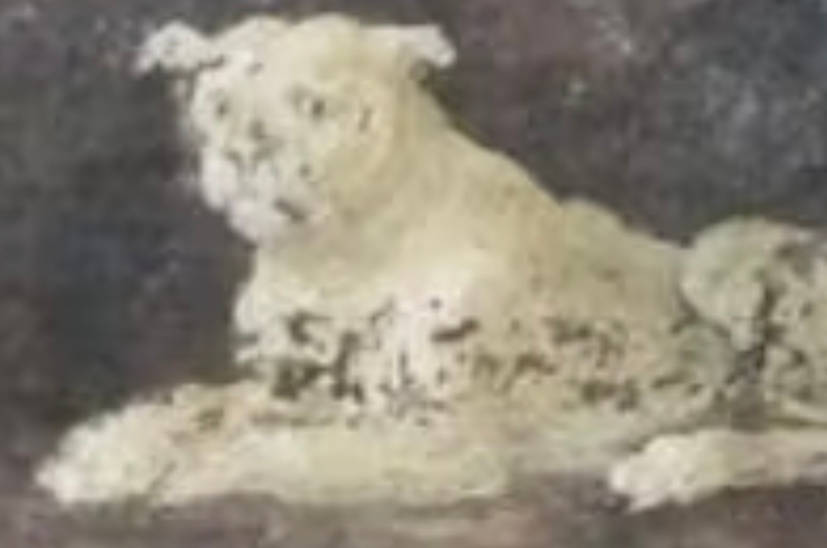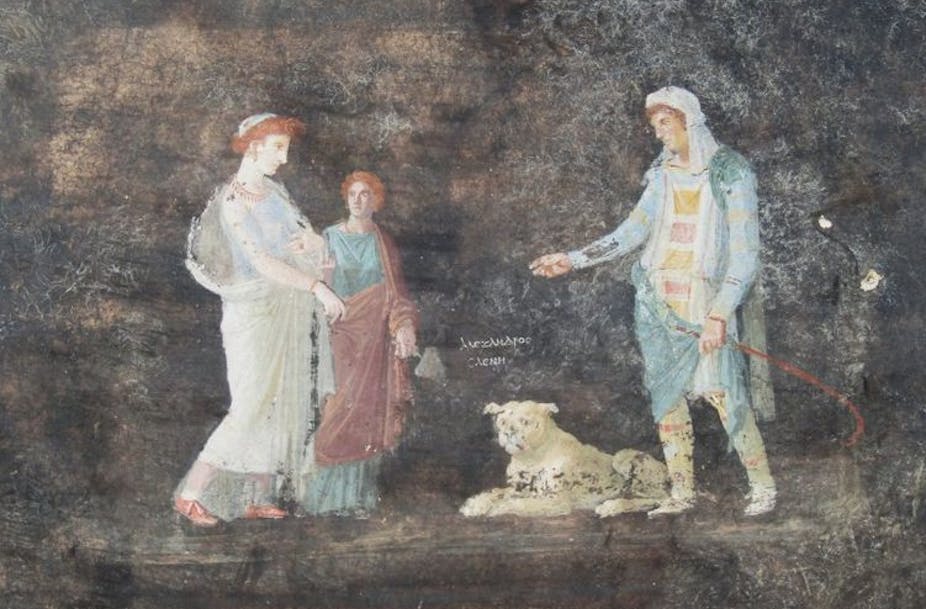
(The fresco showing Helen of Troy and Paris. Pompeii Archaeological Park)
Imagine seeing the face of Helen of Troy staring back at you, from within the ashes of a 2,000-year-old city. But these aren't the burned walls of Troy. And these ashes aren't the scars of a city burned down for the sake of "the face that launch'd a thousand ships". This is Pompeii.
Helen is depicted in stunning detail (alongside Paris, the prince of Troy) in one of the paintings on the recently discovered fresco wall of the winter dining room of a Pompeian villa. Other paintings on the walls depict two more women from the Trojan war myth – Helen's mother Leda and Cassandra the Trojan prophet.
When this ancient Roman town was blasted by the fatal eruption of Mount Vesuvius in AD79, it must have felt much like the all-out siege that the ancient epics, by poets like Homer, tell us battered Helen's Troy. But this siege was brought about by the violent forces of nature, not war.
As ash poured down on Pompeii and super-heated explosions charged the streets, the victims of Vesuvius fell where they stood, captured in the pumice that pummelled them and their homes like sling-stones. People ran, leaving bread in ovens that would never get eaten and paint pots abandoned alongside half-decorated walls.
As the Roman lawyer and author Pliny the Younger writes in his eyewitness account of the disaster, in that night where "the darkness was darker and thicker" than any other, it was as if the whole world was ending.
Parts of the town that haven't seen the light since that last darkness closed over the Pompeian sky are now being uncovered again. In a rescue mission to preempt potential collapse, parts of what's known as region nine of Pompeii are being excavated for the first time.
Ash is getting scraped back, walls are rearing up into the sunlight out of the piles of rubble. And as the archaeologists dig, more of Pompeii's secrets emerge, in astonishing condition, bright as the day they were buried.
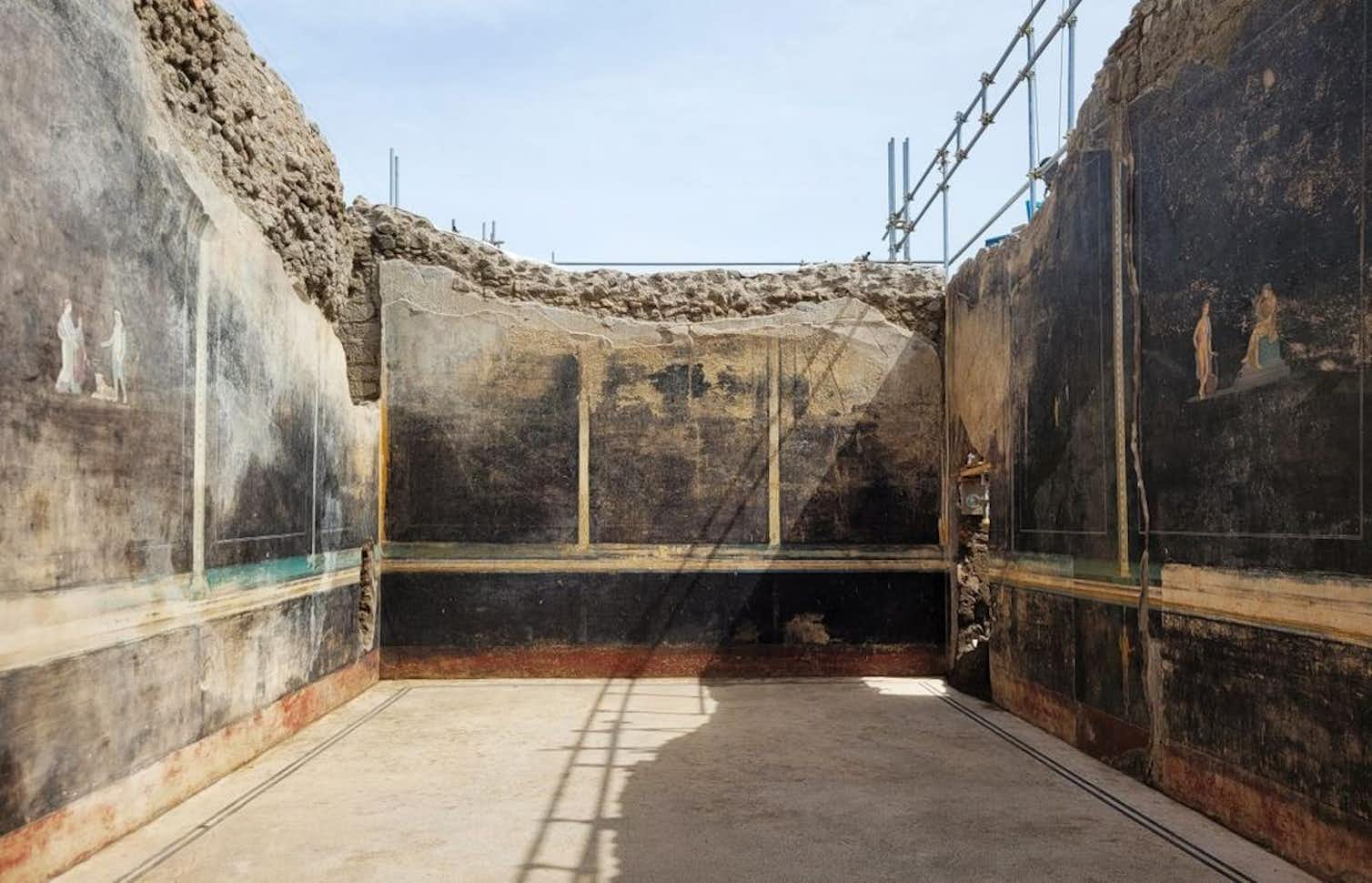
(The full uncovered dining room. Pompeii Archaeological Park)
The women of Troy
The painting of Helen is the latest in a series of remarkable discoveries, that also brought us the fresco of something that looks astonishingly like pizza.
Every clue that comes out of the rubble in Pompeii provides valuable information to ancient historians like me about the lost world Pompeii represents. They tell us about the way people lived, from the gorgeous frescoes all the way to the sewage trapped in the drainpipes (I spent a summer studying this and it is more fascinating than it sounds). But there is something particularly special about these mythical paintings.
It's not just their unusual style, which shows the painters experimenting with new techniques and representing the latest artistic fashions. It's the trio of women from Greek myth collected together in a way that makes us see the Trojan war myth anew – and puts the stories of women at the forefront.
And it's an amazingly fitting time for this discovery. Over the past decade, a tidal wave of bestselling novels has hit the mainstream retelling the stories of the women of the Trojan war – from my own, For the Most Beautiful (2016) to The Silence of the Girls by Pat Barker (2018), A Thousand Ships by Natalie Haynes (2019) and Clytemnestra by Costanza Casati (2023).
This moody, dark-walled dining room in a private villa was likely the residence of the Pompeian politician, Aulus Rustius Verus. It shows that, just like us, Pompeii's elite were well versed in – and eager for – stories of the women of ancient Greek myth.
The role of the fresco
Triclinia (three couches set around a table, where guests would recline), set up in front of frescoes such as this, were the perfect place for Pompeians to gain new perspectives on old stories.
Every couch gave you a different point of view on the myth. Sit on one side, and you'd be faced with the image of Helen's very first encounter with Paris. Is Paris' outstretched arm an invitation or a threat? Is there a sense that Helen is lingering, uncertain, with that back foot scraping behind her?
Homer's epics – the first to tell Helen's story – are ambivalent about whether Helen was raped by Paris or went to Troy of her own accord. This painter seems to be exploiting that ambivalence.
You can just imagine the Pompeian literati quaffing glasses of expensive wine as they gazed at Helen's face and debated the subject.
But this isn't the only chapter in the tale. Sit elsewhere, and you'd have a stark reminder of a very different angle on the myth: the disturbing background to Helen's birth, and the context to so many stories of women in the Greek myths. Just behind Helen is painted a graphic image of Leda, Helen's mother, being attacked and raped by Zeus, in the form of a swan.
And then, last but not least: on the opposite wall is a depiction of Cassandra, the prophet of Troy. She was cursed by Apollo to tell the truth and never to be believed after she refused to have sex with him. No matter how many times she screams that Troy will fall, nobody listens. This is the price of ownership over your body as a woman in Greek myth – the loss of your voice.
From a rape, to an abduction, to a curse. These three women's stories offer an overture of the Trojan myth. The start, with the birth of Helen, the cause, with Helen's leaving for Troy and the end, with Cassandra's predictions of Troy's fall. United around this Pompeian dining room, they are a spectacle, a conversation starter – a fabulous (and fabulously well connected) tale.
But they're also a warning. Troy fell. And so will Pompeii. As the grim skeletons discovered in the villa show, just like the Trojans, Verus and his guests didn't listen to Cassandra either.
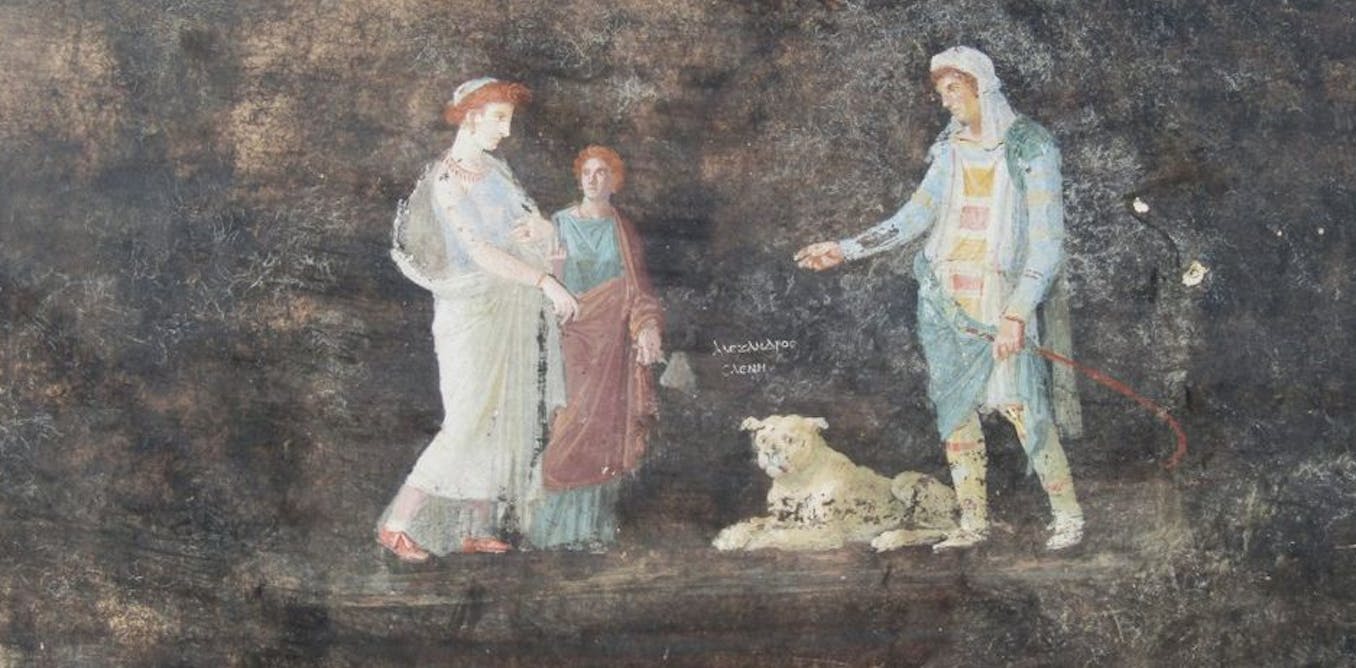
Newly uncovered Helen of Troy fresco shows Pompeii’s elite were eager for ancient Greek stories about women
The paintings show the trio of women from Greek myth in a way that makes us see the Trojan War myth anew.
 theconversation.com
theconversation.com
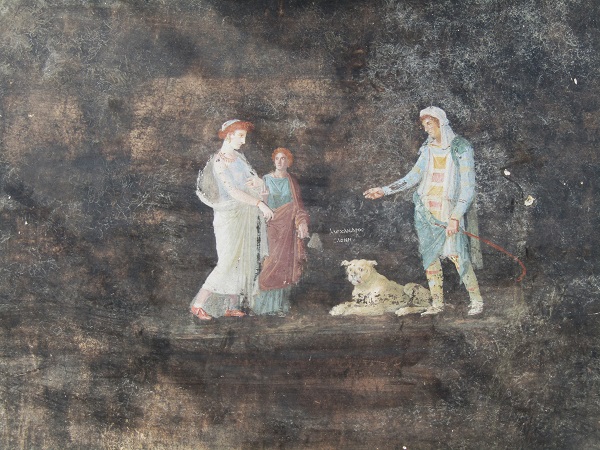
Quando la Guerra di Troia non era ancora decisa. Il salone nero con affreschi di III stile nella Regio IX, insula 10 di Pompei - Pompeii Sites
Lo scavo archeologico avviato nel 2023 nell’insula 10 della Regio IX a Pompei, necessario per la sistemazione dei fronti e per il miglioramento dell’assetto idrogeologico del pianoro, ha finora restituito due abitazioni, collegate tra di loro, che si affacciavano su via di Nola, le cui facciate...


